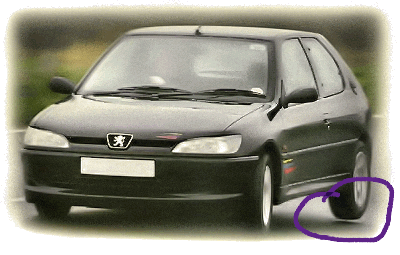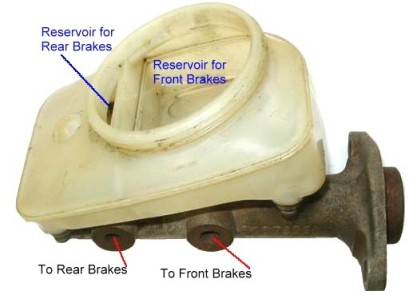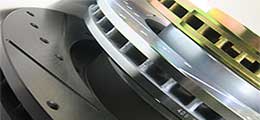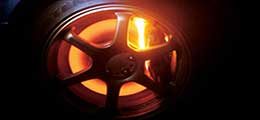 * Source: f1-dictionary.110mb.com
* Source: f1-dictionary.110mb.com
When changing brake pads, you are nearly 2x as likely to be installing front brakes vs. rear brakes, and for good reason. Your vehicle does most of it’s braking work in the front of the vehicle, and pads wear a great deal faster as a result. Thankfully, front brakes are usually easier to change than rear brakes, so vehicle engineers did something right….
If you are wondering why exactly front brake pads wear faster than the rear, or want to know how rear brakes differ from the front, then read this article…
Weight Transfer
When applying brakes in your own daily driver, you have probably noticed the transfer of weight in the vehicle from back to front. Front brakes as a result must be made larger and stronger than the rear to equalize braking force between the wheels. Mid-engine performance vehicles partially exist to make brake sizing irrelevant, and allow for the entire brake system to be strengthened as a result.
The center of mass on front engine vehicles exists just ahead of the rear tires, and is fixed there for both acceleration and braking.
During acceleration, the transfer of weight on the vehicle moves to the rear of the vehicle, and is near this center of mass. In a rear wheel drive vehicle, more downward force can be put on the rear tires for more grip as a byproduct when this happens. Front wheel drive vehicles do not benefit from this as a result, and this partially explains why most performance vehicles are rear wheel drive.
* Source: f1-dictionary.110mb.com

During braking on most vehicles, the center of mass on the vehicle tries to lead the vehicle, and pushes most of the weight of the vehicle to the front therefor causing the front brakes to do most of the braking work. The center of mass will always try to lead the vehicle, so the rear brakes will never have an equal ability to stop the vehicle.
For purposes of trying to improve the stopping power of the vehicle, braking force must be properly matched in both the front and the back for maximum braking performance. If the sizing of the back brakes were similar to the front, then the rear tires would lock faster than the front ones would, and a loss of control of the vehicle would often result when braking. The center of mass in this case would usually start to move perpendicular to the vehicles initial direction instead of its previous one.
* Source: buckeyetriumphs.org

The balance of braking power from the front wheel to back is carried out in a few different ways. Namely, rear rotors are smaller than the front, and rear calipers have a lower level of clamping force. Another popular tactic auto manufacturers use to balance braking force is to use a differential master cylinder that allows for a greater amount of hydraulic pressure applied to each brake rotor individually. By doing this, calipers can have similar design, but operated with a varied amount of hydraulic pressure thereby effectively balancing wheel braking force.
If you are looking to upgrade any part of your vehicle’s braking system, then you must seriously consider this transfer of weight during braking as to properly match braking force between the front and rear wheels. Your brake part supplier can usually give you some good advice on how to properly match your brake parts to obtain premium braking performance on your vehicle.









